6 cars that flopped outside their home markets
2023 marks 50 years since the lovely Volvo P1800 ended production. Oddly enough, two other cars in this list exited stage left in 1973: The Sunbeam Minx and the Opel GT. This article originally ran in 2019 but, given those coincidences, we couldn’t resist sharing it again. —Ed.
The iconic WWII Willys Jeep and its later English rival, the Land Rover, have been sold around the world for almost 80 years. They make sense pretty much everywhere.
However, some cars just don’t translate to other countries, even if they were hugely successful where they were born. These include the tiny 1948–1990 two-cylinder Citroën 2CV and the 1959–2000 British Motor Corporation Mini. Based on their domestic reputations, each sold more than five million copies in 40 years. Overseas, they appeal to contrarians, who don’t care that they are small and slow.
Cross-cultural efforts have produced an endless list of unsuccessful transplants. Whether the brand name is changed or not, they just don’t fit, and some of the more bizarre attempts have been quite recent. Even if the cars were mechanically sound, a lack of parts and weak service support outside their domestic markets often proved insurmountable. Here are 6 such cases where cars in other markets got lost in translation.
1963–73 Sunbeam Minx and Arrow, Plymouth Cricket, Simca 1000

Chrysler leaped into the European market in 1964 and immediately wondered which vehicles from its overseas catalog could transfer to the United States. The Shelby Cobra–like Sunbeam Tiger was the fastest option, packing a V-8 stuffed into an Alpine roadster. But Chrysler didn’t have a suitable substitute for Ford’s lightweight 260-/289-cubic-inch engine found in the Cobra, so the Tiger died off in 1967.
Moving downmarket, Chrysler branded British four-cylinder Hillman Minx and Hunter sedans as Sunbeams. The Hunter sold almost 500,000 examples worldwide in 10 years, but only a handful reached the U.S. in 1967, badged as Sunbeam Arrows. The underpowered Minx sedan was imported in 1966–67, with the option of a pathetic automatic transmission. French Simca 1000-cc sedans dribbled into the states from 1963–69, but few survive, despite 1.6 million sales elsewhere. Hillman Avenger sedans and wagons arrived in 1971 as Plymouth Crickets to fight the Pinto and Vega, but the European models had little support. Only 27,682 Crickets were sold in three years, and by Jiminy, it’s virtually extinct today.
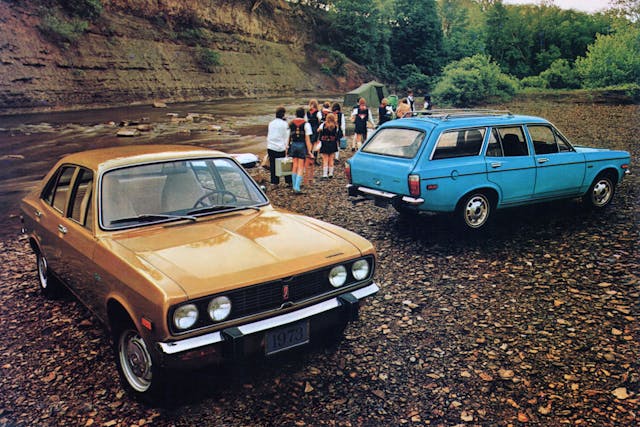
In a curious turn of fortunes, Chrysler was successful with Mitsubishi imports in the 1970s. It sold more than 300,000 Dodge Colts, Challengers (!), Plymouth Champs, Arrows, and Sapporos while developing its own Chrysler Le Baron, Plymouth Reliant, and Dodge Aries K-cars. Few 1970s captive imports survive and 1980s K-cars are scarce, though no one cares.
1991 Lotus Elan M100

Sturdy if bland, the Lotus Elan M100 was reputedly penned by a Japanese team competing for the design of the Mazda Miata. Unfortunately, the team lost the bid to Japanese expat Tom Matano, who spent years working for GM before moving to Mazda’s North American arm.
The Elan offered a 165-hp, 1588-cc, turbocharged DOHC fuel-injected Isuzu four-cylinder engine, which drove the front wheels via a five-speed manual gearbox. The car weighed 2249 pounds and was capable of 135 mph. While it was quick and handled well, front-wheel drive was anathema to Lotus fans; in 1991, only 528 were sold in the U.S., at an uncompetitive MSRP of $33,900. Worldwide production totaled only 3855.
1975–76 Chevrolet Cosworth Vega
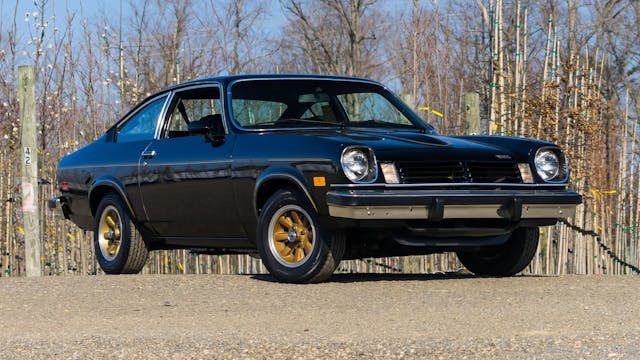
When the Chevrolet Vega was launched in 1971, John Z. DeLorean demanded a twin-cam version aimed at the BMW 2002 and the Alfa Romeo GTA, both of which competed in SCCA and in various European circuits. Keith Duckworth of Cosworth Engineering designed a DOHC engine, 1000 of which were required for homologation. Cosworth’s engine developed 290 hp at 9000 rpm, but the high-silicon alloy blocks kept breaking, and Duckworth quit.
Cosworth’s Weber DCOE carburetors could not be smogged, so the four-cylinder was fitted with Bendix fuel injection and its crankcase reinforced for 1974. But emissions demanded 8.5:1 compression instead of the planned 12:1 ratio. Horsepower plunged to a miserable 110 hp. Then the motor failed EPA testing and the project was delayed until 1975.
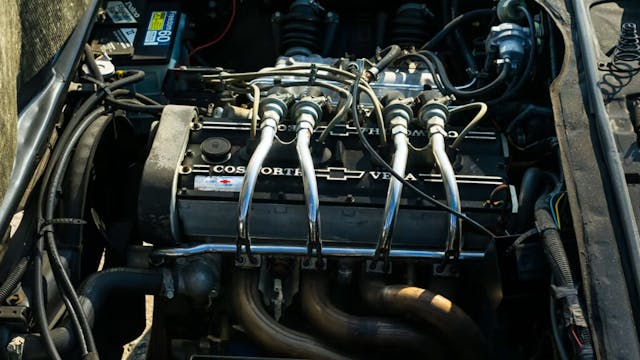
All 1975 Cosworth Vegas were black with gold trim, but cost $5916—double the cost of a standard Vega. Each CosVeg had a four-speed gearbox, unique alloy wheels, full instruments in a gold-tinted dashboard made of turned aluminum, and a numbered dash plaque. 1976 Cosworths came in seven other colors: Antique White, Dark Blue Metallic, Firethorn Metallic, Mahogany Metallic, Dark Green Metallic, Buckskin, Medium Orange, and Medium Saddle Metallic. A five-speed manual was optional.
The muscular price tag and minimal performance meant that only 2061 Cosworths were built in 1975 and 1447 in 1976. Of 1492 leftover engines, a few were used for warranty, 500 disassembled for parts, and the rest scrapped for a tax write-off. Ironically, present-day engine technology can deliver on Cosworth’s original promise.
1970–73 Opel GT
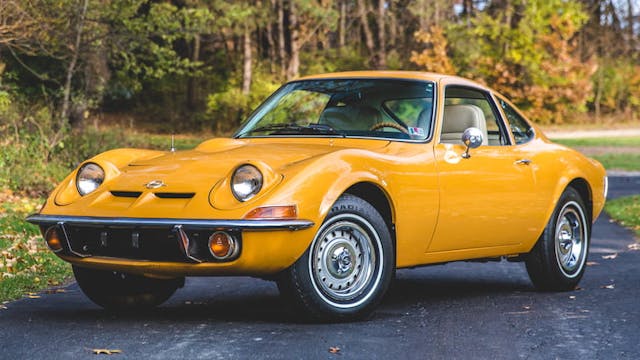
When the Opel GT concept was shown at the 1965 Frankfurt and Paris Motor Shows, it was hailed in Europe as a mini Corvette and reputedly delayed until the strikingly similar C3 Corvette was ready. The GT’s running gear came from the lowly Kadett, but the elegant bodies were built by Brissonneau and Lotz in Paris and shipped to Germany for assembly. Most had a 90-hp, 1897-cc, “high-cam” (almost-OHC) engine. In all, 103,373 GTs were built. About 70,000 were sold in the U.S. by puzzled Buick dealers grateful for an automatic option.
The GT’s layout was intricate. Front suspension was by transverse-leaf with a live rear axle located by coil springs, trailing arms, and Panhard rod. Brakes were disc/drum and steering rack-and-pinion. Hidden headlights were manual and flipped over sideways. There were four round taillights but no opening trunk, for structural rigidity. Road & Track reported 0-to-60 mph in 10.8 seconds, but wind-tunnel research and ram-air induction enabled a top speed of 115 mph.
Bash-bumper laws of 1974 doomed the GT, which suffered chronic rust issues. The 1.9-liter engine had a tiny three-quart sump, so oil levels had to be checked regularly. Those flip-over headlights demanded flexible wiring, but engine heat hardened the harnesses’ plastic insulation, which cracked and led to fires. With so many built by Opel, spares do exist; even better, wrecking yards and hoarders rarely crush these cars.
Volvo P1800 and Jensen
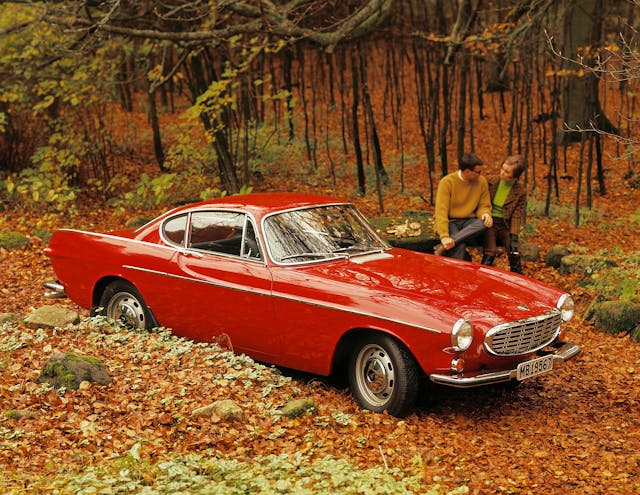
Volvo’s first sports car was the disastrous P1900 roadster in 1955. A fiberglass blob with a pig snout, one tester listed 29 “must fix” problems. Volvo’s CEO Gunnar Engellau took the P1900 on a 447-mile trip and canceled it on his return. Only 68 examples had been sold.
The 1961 P1800 sports coupe was much better. Derived from Virgil Exner Jr.’s Chrysler concepts built by Ghia in the 1950s, the design resembled Ghia’s Thomas Special and Volkswagen’s Karmann Ghia coupe: It wore fins, a curved side spear, and “cow horn” front bumpers. A kitschy interior featured chrome and stylized gauges.
With its factories already running at capacity, Volvo contracted with UK-based Jensen to build the first 6000 examples of the P1800. However, chronic rust issues in the unibodies of the Jensen-built cars forced Volvo to return production to Sweden in 1964. Now called the 1800S, the car’s grille was simplified and its bumper straightened. The curved front bumpers and side spear vanished the next year.
The 1800 was saved from obscurity by actor Roger Moore, who drove one in the seven-year British TV series The Saint. The network wanted a Jaguar E-Type, but Sir William Lyons refused. Volvo’s 1800 proved mechanically bulletproof, with a 1.8-liter B18, four-cylinder, OHV engine, front disc and rear drum brakes, independent front suspension, and vault-like unit construction. Production lasted until 1973. Retired teacher Irv Gordon drove his 1966 model 3,250,257 miles.
Saab 9-2X, 9-7X, 9-6
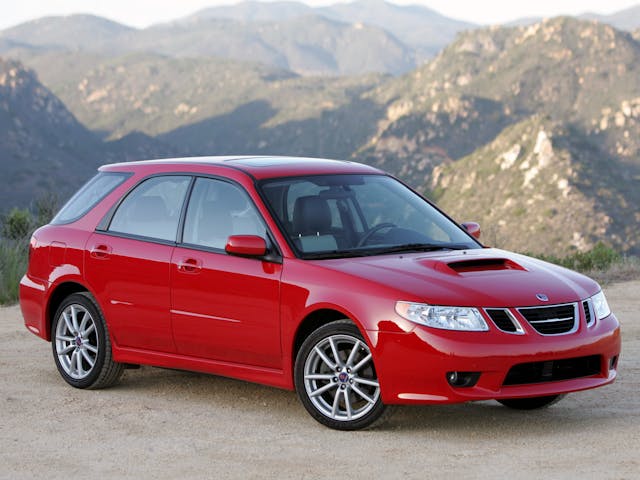
Considering Saab was such a well-defined brand, it’s amazing how many bizarre, rebadged vehicles have carried the name since the egg-shaped 92 was launched in 1950. Never mind the Triumph engine in the 1967 Saab 99; the Saab 600 of 1978 was really a Lancia Delta, while the 9000 of 1985 shared mechanicals with Alfa Romeo 164, Fiat Croma, and Lancia Thema. GM bought 50 percent of Saab in 1989 for $600 million and that resulted in the Opel-based 900 of 1994. Both the 900 and 9000 were renamed in 1997 as the 9-3 and 9-5.
When GM bought the remaining 50 percent of Saab in 2000 for $125 million, it cast around for other ways to monetize the brand. Since GM owned 20 percent of Subaru (Fuji Heavy Industries), an obvious choice was the all-wheel drive, turbocharged WRX Impreza wagon. The five-door Subie was face-lifted forward of the windshield, weighed down with luxury options, improved in numerous mechanical aspects, and saddled with a price tag $3000 higher than the Subaru’s. Launched in 2004, the 9-2X’s best year was 2005, when 5940 were sold. That figure faded to three in 2008. The total count: 9284.
The Saab 9-7X was an expensive Saab variation of the Chevrolet Trailblazer, designed to replace the Oldsmobile Bravada. It debuted in 2005 and managed to catch a bit of the SUV wave, selling 85,994 units before succumbing in the 2008 crash, with 1209 leftovers sold in 2009. Mercifully, perhaps, plans to sell a Saab-badged variation of Subaru’s unpopular Tribeca SUV (badged as the 9-6) were shelved when GM sold its share in Fuji Heavy Industries in 2005. The 9-6 plan was never officially revealed until a prototype was added to the Saab museum in Trollhattan in 2011.
***
Check out the Hagerty Media homepage so you don’t miss a single story, or better yet, bookmark it. To get our best stories delivered right to your inbox, subscribe to our newsletters.
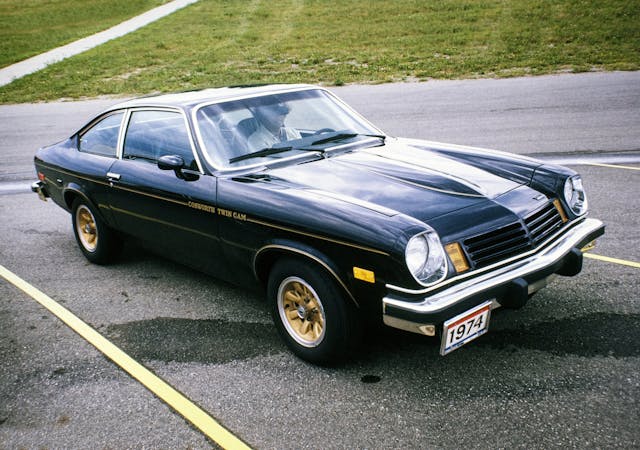
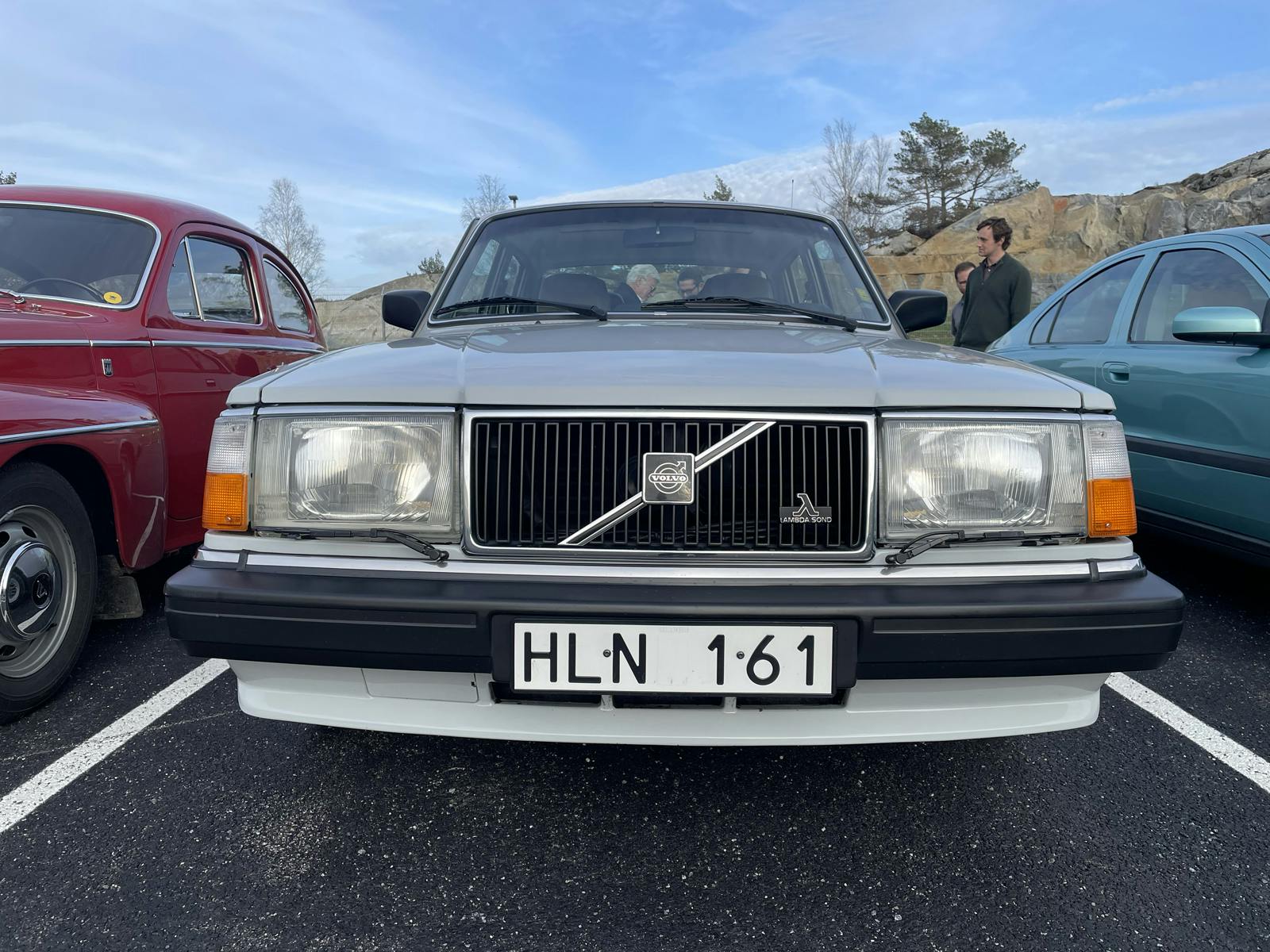

What happened in Vegas…oh, never mind.
I didn’t know at the time but I was one of the few who purchased a brand new 2006 9-2x Aero with a manual engine. Saab/GM stopped production after a few months and I believe there were less than 200 built. 2006 was the only year the Aero got the 2.5liter engine. I loved the performance of that car. Sadly I sold it to a buyer in Canada. I believe he still has it today!
Correct manual gearbox (5 speed)
I didn’t realize that the Cosworth Vega was built for racing homologation. A steel sleeved aluminum 350 block and 3 speed glide and 12 bolt rear would have sold like hotcakes. Given that Chrysler had stuffed the 383 wedge in the A body Darts and barracudas with ease a few years earlier, a small v8 would have been a no-brainer, especially with the v8 Monza providing all the goodies. Sad thing was that these upgrades would have been cheap compared to that 4 cylinder monstrosity they put in the Cosworth. For what it’s worth, the Vega was a better car than the Monza too. GM had their hat on backwards.
I liked many of these back in their day, especially the Cosworth Vega and the Elan.
A friend’s parents had a new Cricket, which she drove to high school; the paint looked someone had painted it with a spray-can – just a terrible paint job. The Colt of that era was apparently a much better car – likely because it was Japanese, not British.
Another classmate’s family had a Simca like that one, and I always hated that car. Perhaps it was the mean-looking frontend, with the angry eyebrows?
Never cared for the P1800, as it looked (and still looks) homely; the wagon version fixed most of that, though.
The Opel GT was rather cute, looking as it did like a pint-size Corvette C3.
Of these nowadays, I would like to have one of the Elans; I don’t have the bias against FWD that many have, and would not be driving the Elan all that hard nowadays anyway. Parts and service might be an issue, though!
I worked at a high volume alignment shop in the mid seventies, we told the service writers we don’t align Vega’s, there cheap unit construction allowed the lower control arm mounting points to spread sending the camber angles into negative territory, we were threatened with dismissal if we didn’t toe and go these pieces of junk.
Not sure what you are smoking : “When the Opel GT concept was shown at the 1965 Frankfurt and Paris Motor Shows, it was hailed in Europe as a mini Corvette” ??? So in 1965 it was “hailed as” a mini version of the 1968 corvette? LOL
I had an ’70 Opel GT in college. I autocrossed and drove TSD rally. A fun car to drive and it had great looks, but it frequently was in the repair shop because so many things just broke so often! I finally had enough of that and bought a big V8 1971 Pontiac GP that could carry stuff an run flawlessly for years at high speeds.
Took delivery of a 71 Vega GT after a 5-1/2 month wait from time of order. First one delivered to southern Ontario. Great styling , awesome handling for the time period . The secret was to order with the HD radiator. Ran solo competition for 5 years plus extensive cross continent road trips without any issues including Death Valley. Sold it to buy a 240z. The Monza filled it’s gap.
The Volvo P1800 body was built by Press Steel in Scotland and then shipped to Jensen Motors to be fitted out. Having had two Jensen Healeys and currently driving a Jensen Interceptor, I’ve not had rust issues with it as a 52-year-old daily driver.
My first car, except it was blue, was a 1967 Simca 1000cc. A French car imported by Chrysler. I learned how to drive it in the winters in Michigan.